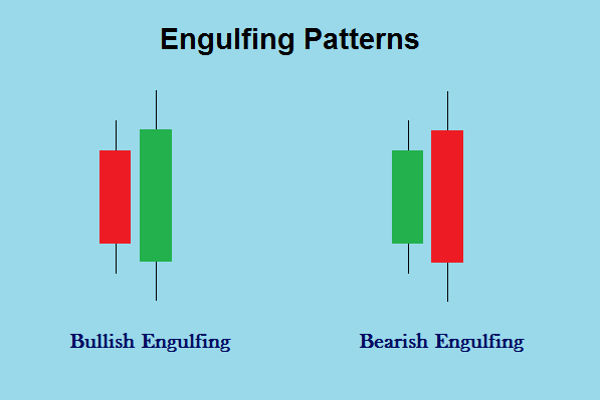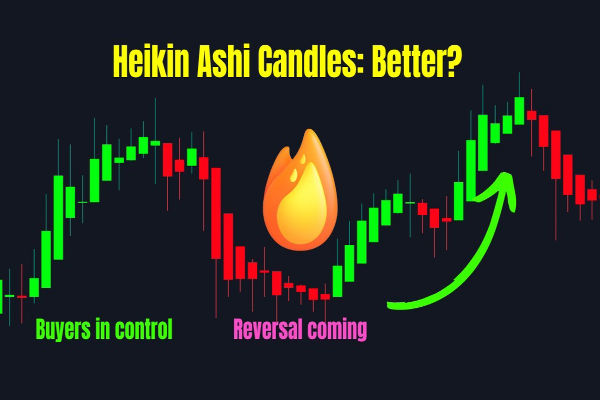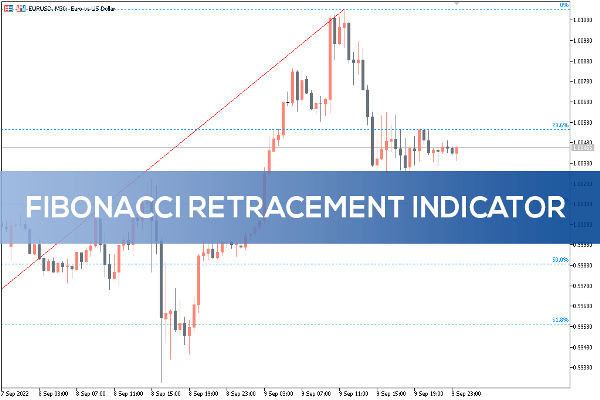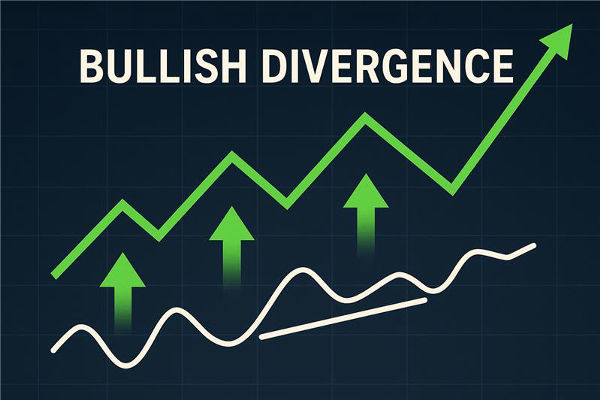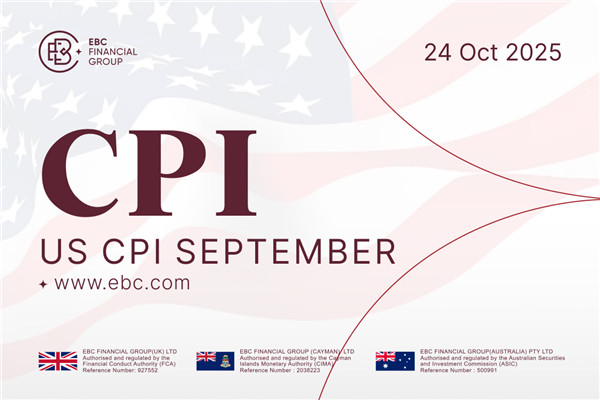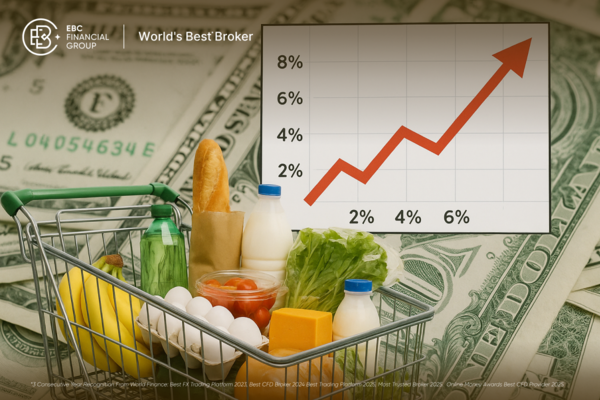If you know more about foreign exchange trading, you must have heard of
candle charts, also known as K-line charts. Candlestick charts are a widely used
technical analysis tool in the stock and foreign exchange markets and are
popular for their clear graphics and intuitive information delivery. Among the
many types of candle charts, some are considered particularly important by
investors because they can provide key market trend information and become a
powerful tool for investment decisions. This article will delve into these
important candle chart types, let investors know what types of candle chart
patterns are divided, and allow investors to better understand market
dynamics.
Candlestick charts refer to the price activity of an asset over a specific
period of time. They are an excellent way to understand the price movement of an
asset over a certain period of time, which can be hours, days, weeks, or even
months. They use four main components for their analysis, including open, close,
high, and low.
The history of candlestick charts dates back to the 18th century, when
Japanese rice farmers tried to understand fluctuations in rice prices. They
found that the market is affected by human emotions. In addition to following
the laws of supply and demand, candle charts can visually depict market emotions
and understand market patterns. Ultimately, traders use these patterns to
analyze and predict the short-term price trends of the market and then make
corresponding trading decisions based on this information.
While candlestick charts are similar to bar charts, candlestick charts are
more visual and more clearly highlight upward and downward price movements
between the open and close prices. Increasing price movement forms a green
candle, indicating strong positive price dynamics in the market. In contrast, a
bearish candle is red and indicates falling prices.
K-line candles are divided into two types: bullish candles and bearish
candles. The body of the candle represents the opening and closing prices of the
stock price, while the shadows of the candle represent the highest and lowest
prices the stock price has reached. A bullish candle is green and represents an
increase in stock price, opening at the bottom of the real body and closing at
the top of the real body. A bearish candle is red and represents a decline in
stock price, opening at the top of the real body and closing at the bottom of
the real body. On a given K line, any of the entity and upper and lower shadow
lines may not exist. By observing the color and shape of the candle, we can
understand the trend of the stock price.
There are many forms of candlestick charts, each representing different
market conditions and trends.
-
Bullish Engulfing Pattern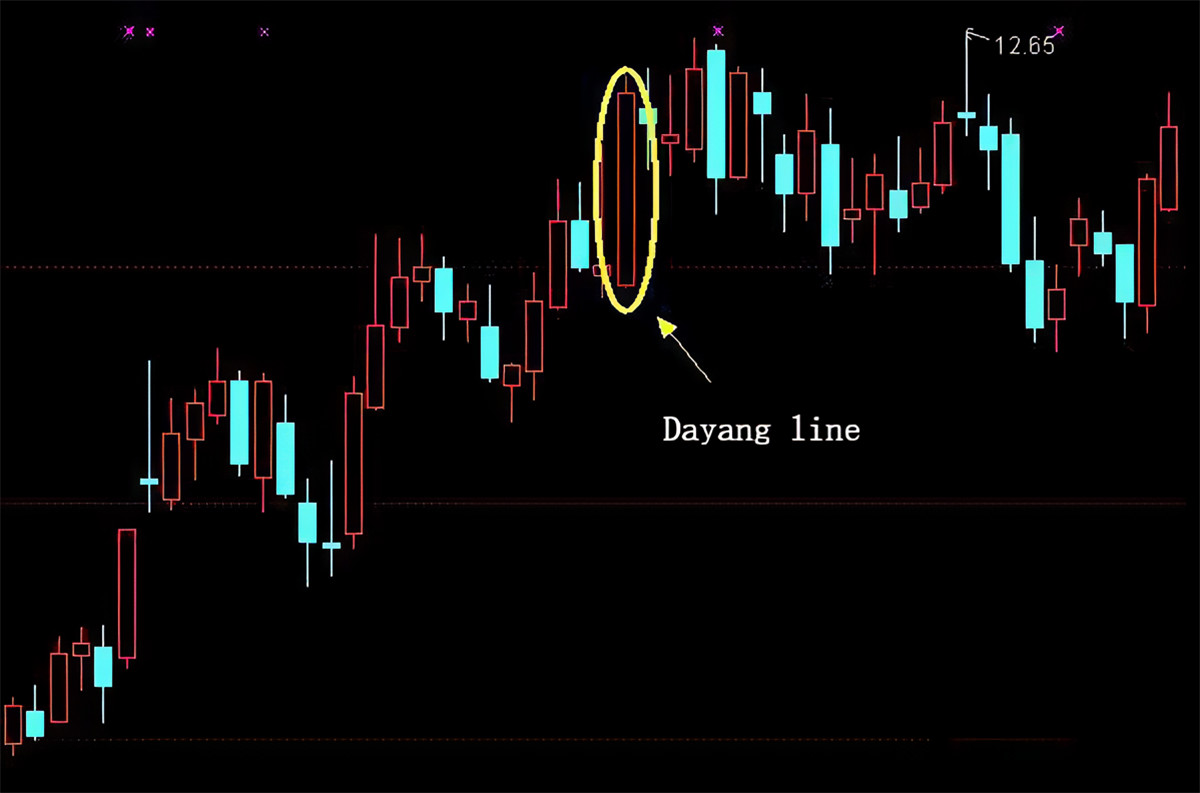
The highest price is the same (or slightly higher) as the closing price, and
the lowest price is the same (or slightly lower) as the opening price. There are
no upper and lower shadows or extremely short shadows. The big positive line is
a long positive line in the entity, and it is a bullish signal when it appears
in the early stage of the rising market. When a big positive line appears midway
and continues to rise, it indicates that the bulls are strong. In a market that
continues to accelerate its rise, the emergence of a big positive line indicates
that the rise has peaked. On the contrary, the big negative line is a long
negative line of entities. It is a bearish signal when it appears in the rising
market, and it continues to be bearish when it appears in the middle. In a
continuous falling market, the big negative line may be a signal of bottoming
out and rebounding.
Main features:
This pattern may appear in any stock price movement.
The longer the Yang line entity is, the stronger the power is; conversely,
the weaker the power is.
Under the daily limit system, the largest daily Yang line entity can reach
20% of the opening price of the day; that is, it opens with the lower limit and
closes with the higher limit.
-
Bearish Engulfing Pattern
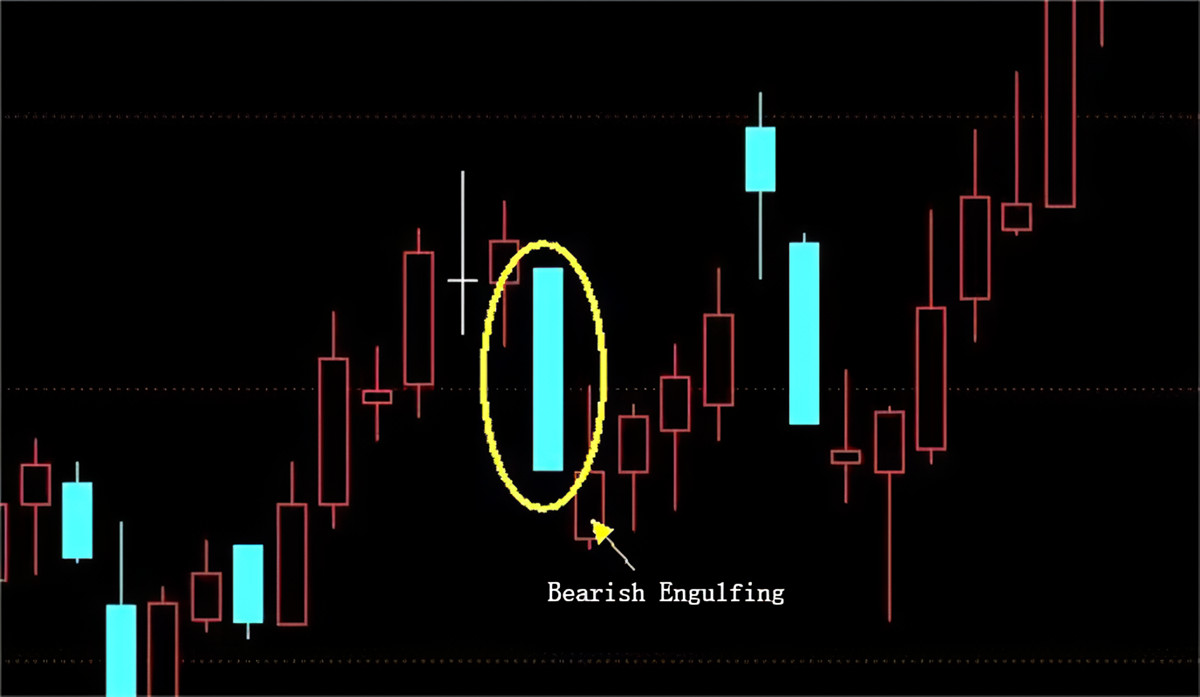
The big negative line is also called the long negative line. The "big
negative line" in the candle chart usually refers to a negative line with a long
real part, which means that the market sellers are stronger during a specific
period of time and the closing price is far away from the opening price. This
situation may reflect pessimistic investor sentiment and increased selling.
The candle chart consists of a real body (rectangular part) and a shadow line
(a line extending up and down), while the "big negative line" mainly focuses on
the length of the real body. A typical characteristic of a large negative line
is that the opening price is close to the highest price and the closing price is
close to the lowest price, forming a falling entity. This shows that during this
time period, the market started out strong but ended with increased seller
pressure, causing prices to fall significantly.
Application rules
The appearance of a large Yinxian in a rising market means that the market
will retreat sharply downward.
The appearance of a large Yinxian in a falling market means that the market
is accelerating its downward plunge.
-
Morning Star Pattern
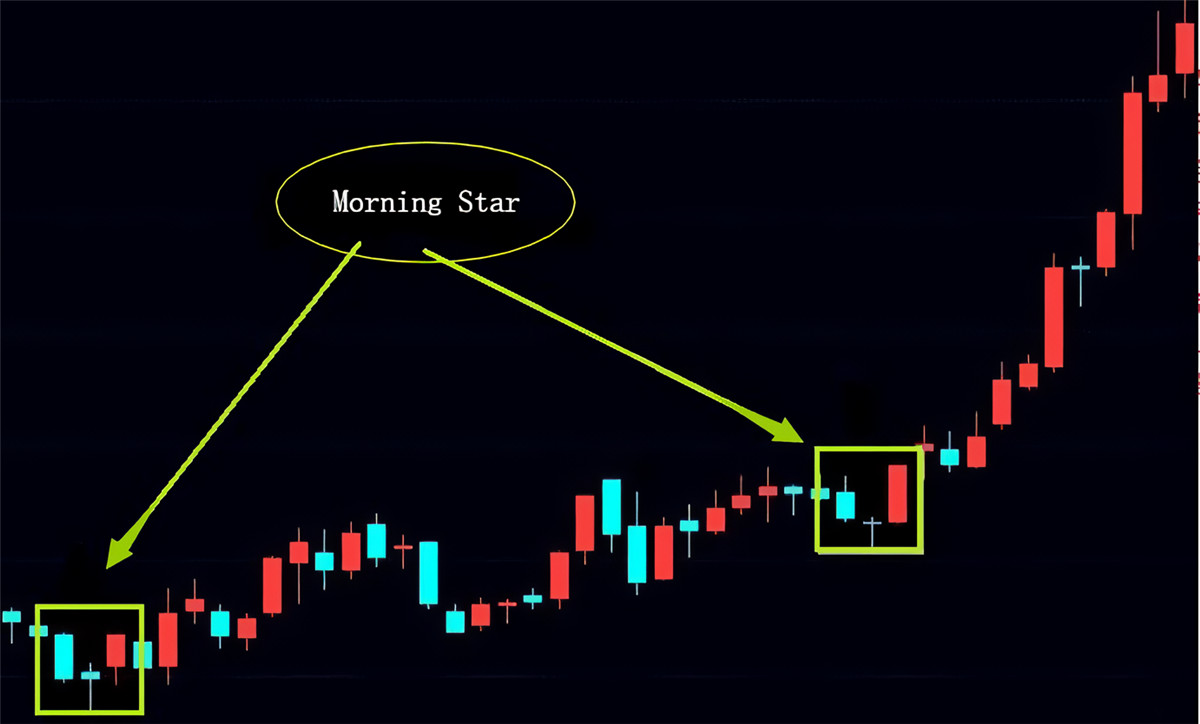
Morning Star is a pattern composed of three K lines, which marks the market
bottoming out and turning around. The occurrence of this pattern is worth
watching because it is a clear reversal signal, making it an ideal buying
opportunity.
First candle (negative line): This is a negative line in a downtrend,
indicating that the market is currently dominated by sellers.
The second candle line (a small, real body or a candle with a lower shadow):
This candle line is usually smaller than the first negative line and sometimes
has a lower shadow, indicating that there is some uncertainty in the market and
that buyers and sellers The forces between them begin to balance.
The third candle line (positive line): This is a positive line in an upward
trend, indicating that the buyer has taken control of the market and the price
may rise.
At the tail end of a downtrend, the Morning Star K-line Pattern usually
appears stronger and is an obvious trend reversal signal. The three K lines form
a complete psychological turning process: from pessimism to long-short balance,
and then to optimism. Therefore, this pattern is more effective in trend
reversal and stop-and-fall trading.
-
Evening Star
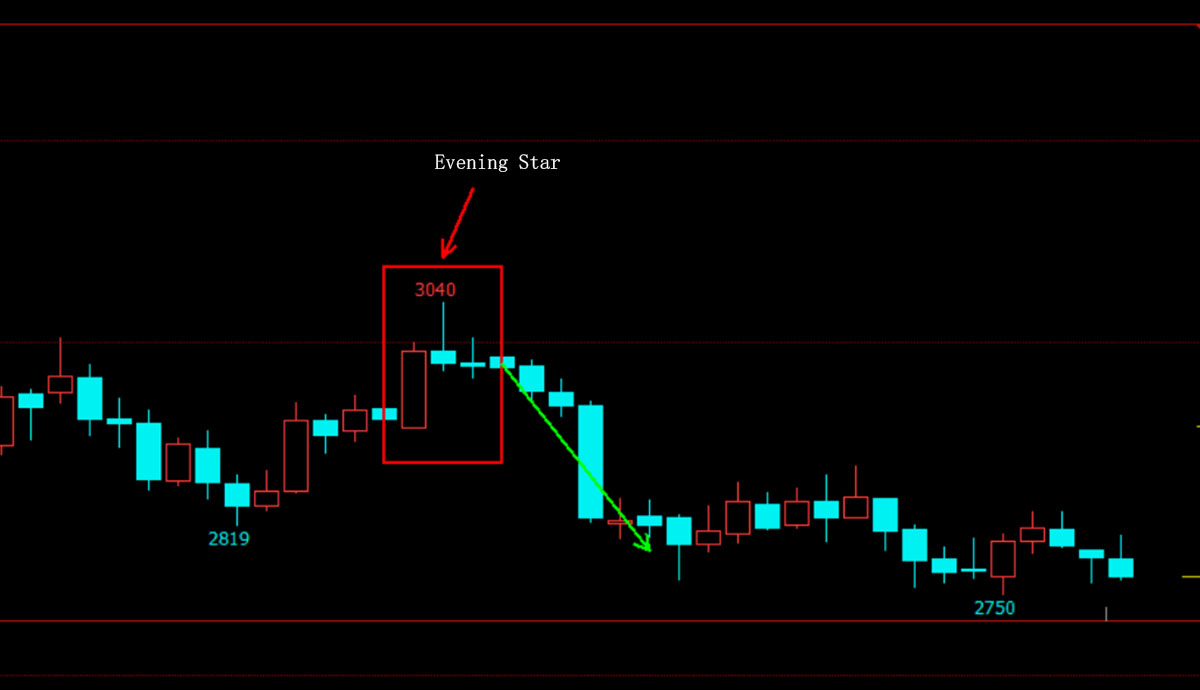
The evening star is similar to the morning star. It is a K-line combination
form and can be regarded as the reversal form of the morning star. Unlike the
morning star, the evening star usually appears at the end of an uptrend, often
marking a periodic top of the price.
First candle line (positive line): This is a positive line in an uptrend,
indicating that the market is currently dominated by buyers.
The second candle line (a small, real body or a candle with a shadow line):
This candle line is usually smaller than the real body of the first positive
line and sometimes has an upper shadow line, indicating that there is some
uncertainty in the market for sellers and buyers. The forces between them begin
to balance.
The third candle line (negative line): This is a negative line in a
downtrend, indicating that sellers have taken control of the market and prices
may fall.
When these three candles appear in sequence, forming an evening star pattern,
this may be a signal of a trend reversal.
-
Three Red Soldier
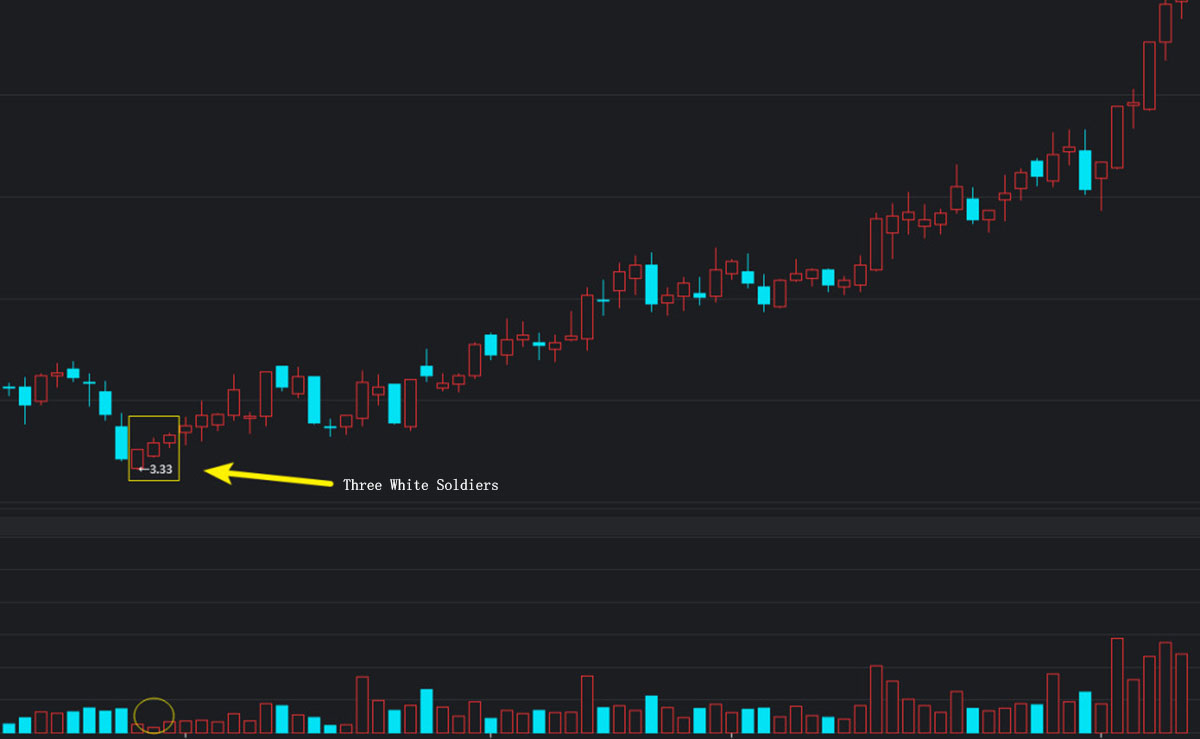
"Three Red Soldiers" is also called "three white soldiers," which is a bullish trend reversal pattern.
The three red soldiers usually consist of three adjacent positive lines. The
opening price of each positive line is higher than the opening price of the
previous one, and the closing price is also higher than the closing price of the
previous one.
This is considered a sign of strong buyer power, suggesting the market may
continue to rise.
-
Round Bottom Bullish
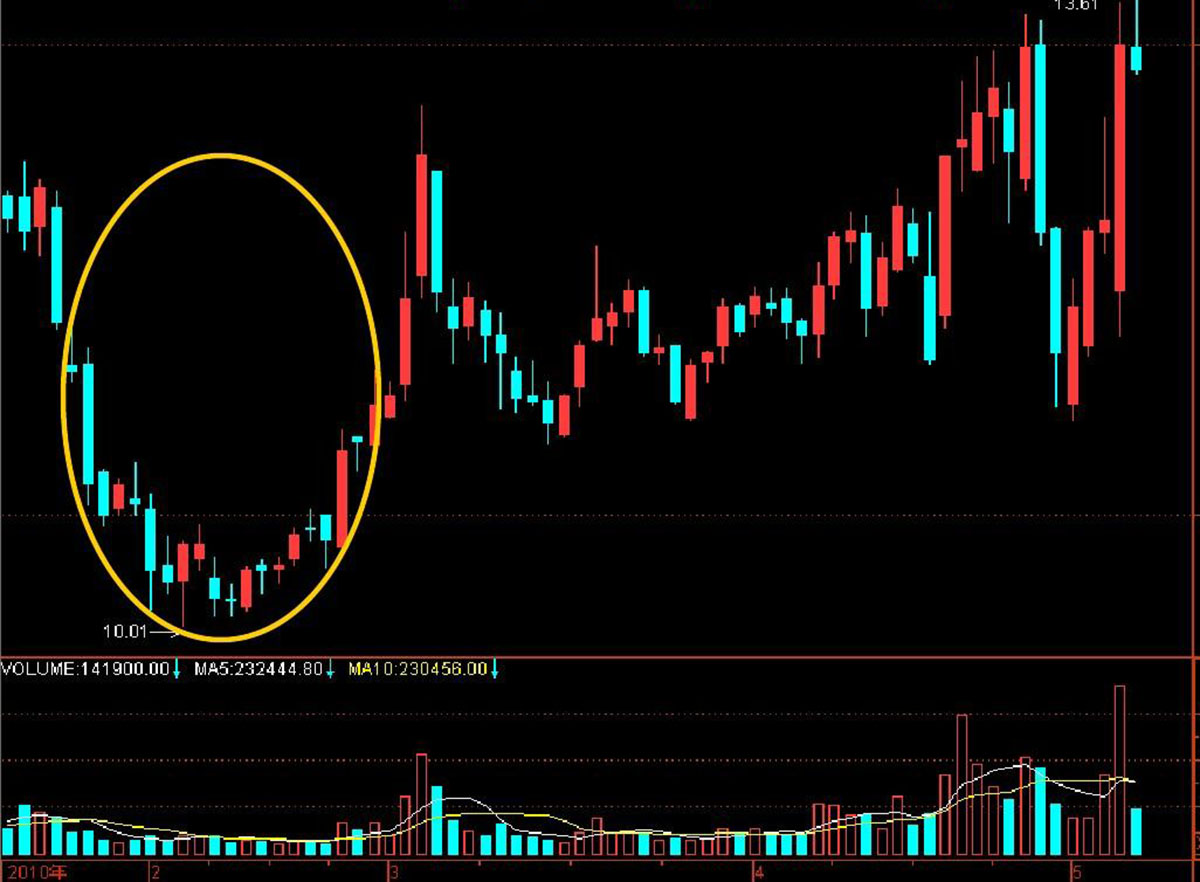
Also known as a saucer bottom, it is usually used to describe the stock price
trend forming a bottom arc shape, indicating that a trend reversal may occur.
This pattern may appear in a K-line candle chart as the stock price gradually
declines over several consecutive periods and then forms a curved bottom,
implying a change in market sentiment from pessimism to optimism. Because it is
shaped like a saucer, it is also called a saucer bottom.
In the K-line candle chart, the round bottom pattern may appear as the stock
price fluctuates at the bottom level for a long time and then gradually rises.
This pattern is sometimes called "bottom accumulation" because investors appear
to gradually accumulate shares at low prices, ultimately driving the stock price
higher.
Technical Characteristics:
It can appear at the end of a decline or in the middle of an increase.
The stock price or index initially fell and rebounded relatively quickly. As
the enthusiasm for traders' participation decreased, the strength of the decline
and rebound became weaker and weaker. Later, it could neither fall nor rise, and
it traded sideways. It is not until new funds enter the market that the stock
price or index begins to improve slightly and begins to rise slowly. Then more
funds enter the market, pushing the stock price or index to accelerate
upward.
The trading volume becomes smaller and smaller as the decline slows down,
shrinks to the minimum when going sideways, and then gradually increases as the
stock price or index rises. When Stock Prices accelerate their rise, trading
volume also increases significantly. On the K-line chart, the histogram of
trading volume is often arc-shaped.
-
Propeller Chart
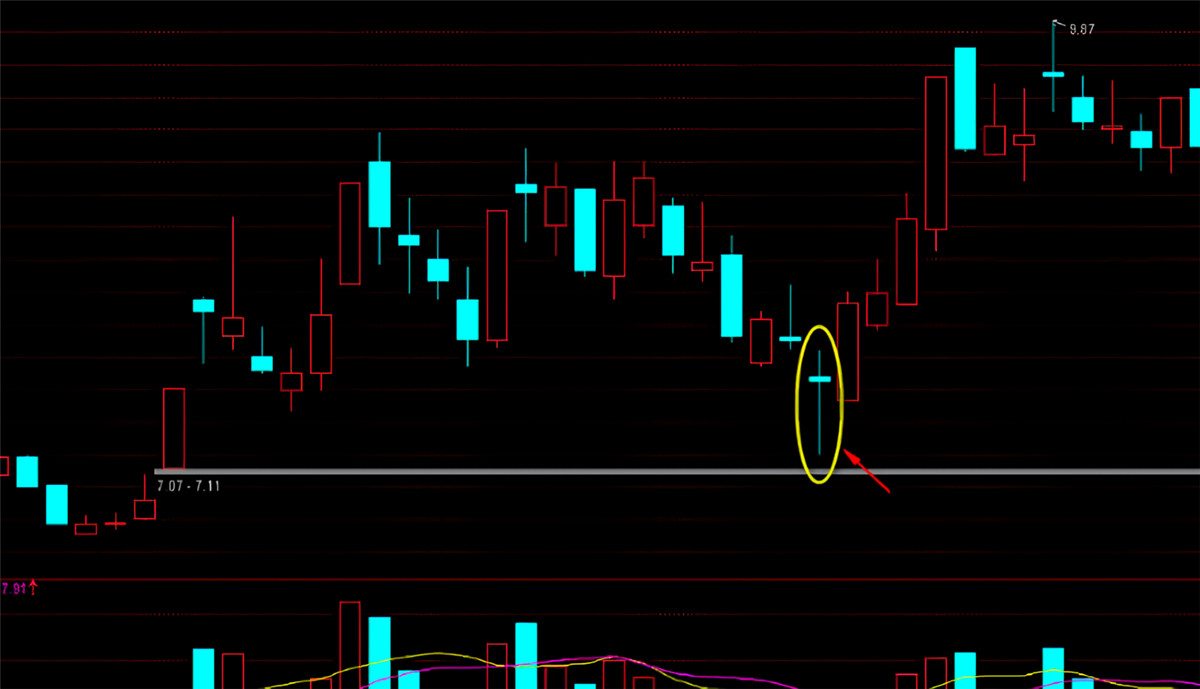
Propellers refer to those stocks in the K-line combination that have small
K-line entities and long upper and lower shadows but show independent trends
within a certain period of time. Sometimes, these stocks may have continuous
negative lines, but the stock price does not fall. When these stocks with
propeller characteristics are not high in absolute price, have good
fundamentals, and have no history of capital expansion, we call them propeller
kings. Generally speaking, in a consolidating market, stocks with propeller-king
characteristics may provide greater investment opportunities.
The following conditions are required to determine whether a stock complies
with the propeller law:
It occurs when the overall market declines, and the cumulative decline is
relatively large, usually in the middle and late stages of the market.
It is in a shrinking state and does not meet the requirements of the 135-day
Moving Average.
The application of the propeller rule helps identify stocks that remain
relatively independent and have greater opportunities in market turbulence.
-
Friends Counterattack Chart
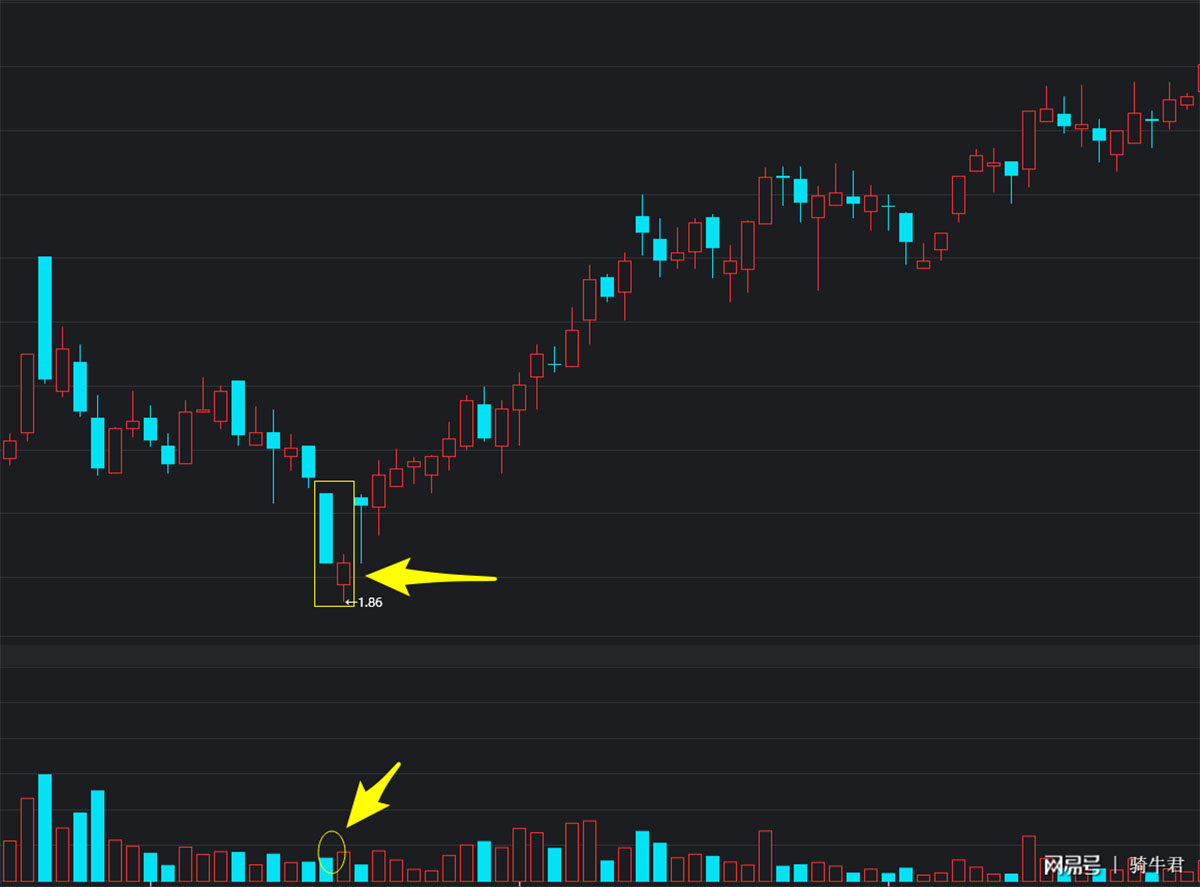
A friend counterattack is a graphic form in technical analysis that usually
appears in a downward trend and consists of two K lines, one yin and one
yang.
A friend's counterattack is seen as a signal to stop falling. When this
pattern appears, investors are reminded not to be blindly bearish because bulls
may launch a counterattack upward. The technical significance of Friend's
Counterattack is similar to that of Dawn, except that the signal is relatively
weak.
Features Include:
First, a big negative line appears, indicating that the market is
falling.
The next day, a short gap and a low opening followed, forming a big Yang line
or a Zhong Yang line. The closing price of this positive line is the same as or
very close to the closing price of the previous day's negative line.
-
Hanging/Hammer Man Chart
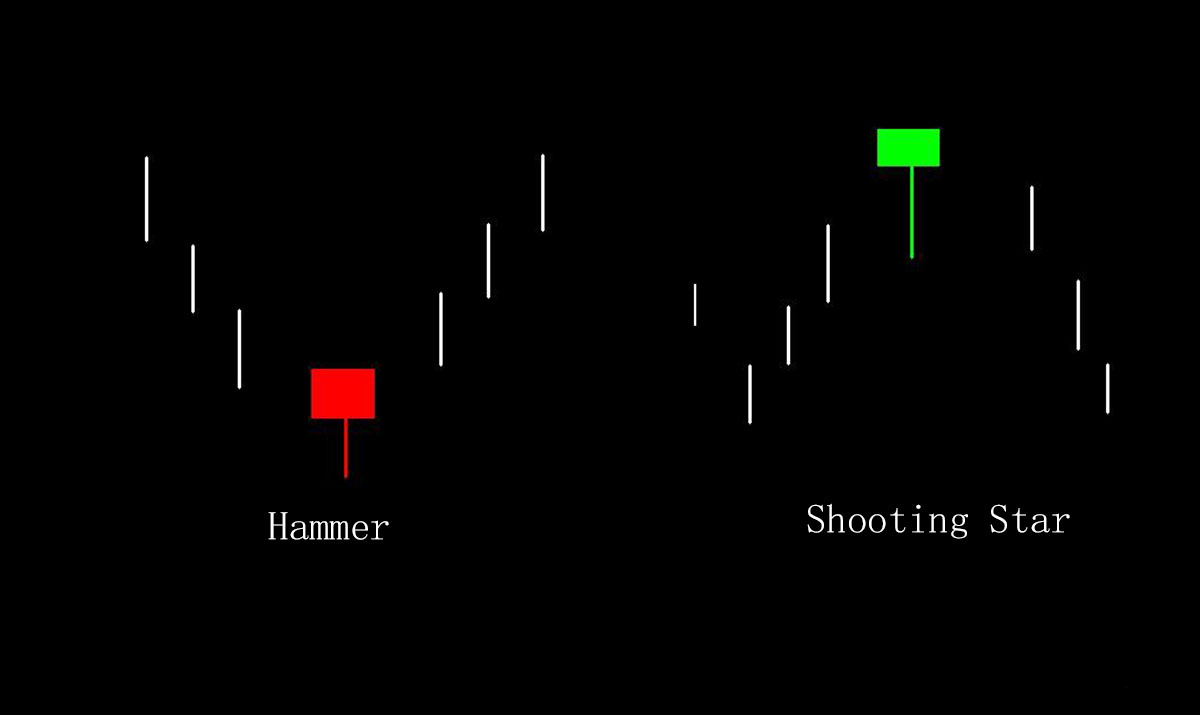
Hammer Line
The lower shadow of the hammer line is very long, the upper shadow is very
short, the entity is small, and the shape is a bit like a hammer. If it occurs
during a downtrend, it may be a reversal signal, indicating that the market is
rebounding from the bottom.
Key points of the hammer line:
The hammer line needs to appear in a downtrend and have the characteristics
of a reversal.
The longer the lower shadow, the better, and the smaller the real body, the
better.
The hammer line is best able to appear at the support level.
The emergence of the hammer line indicates that the market has found support
at the bottom, and buying orders have gradually entered, pulling the market
up.
Hanging Man
Hanging man, also called hanging man, is a graph composed of two candle
lines. The first candle line is a long black real body, the second is a short
white real body, and the closing price of the second candle is higher than the
first real body. . The gap formed by the white real body between the two candle
lines is one of the characteristics of the hanging neck line.
The appearance of the hanging neck line indicates that the market is
experiencing seller pressure in an uptrend. Although the opening and closing
prices are close, the market has experienced large fluctuations throughout the
day. The lower shadow of the hanger indicates that buyers attempted to push the
price higher during the trading day but were ultimately unable to maintain it.
This could signal a shift in market power, with sellers potentially starting to
dominate.
Investors need to wait for more confirmation signals after confirming the
hanging neck pattern to avoid false signals.
-
Double Bottoms Patterns
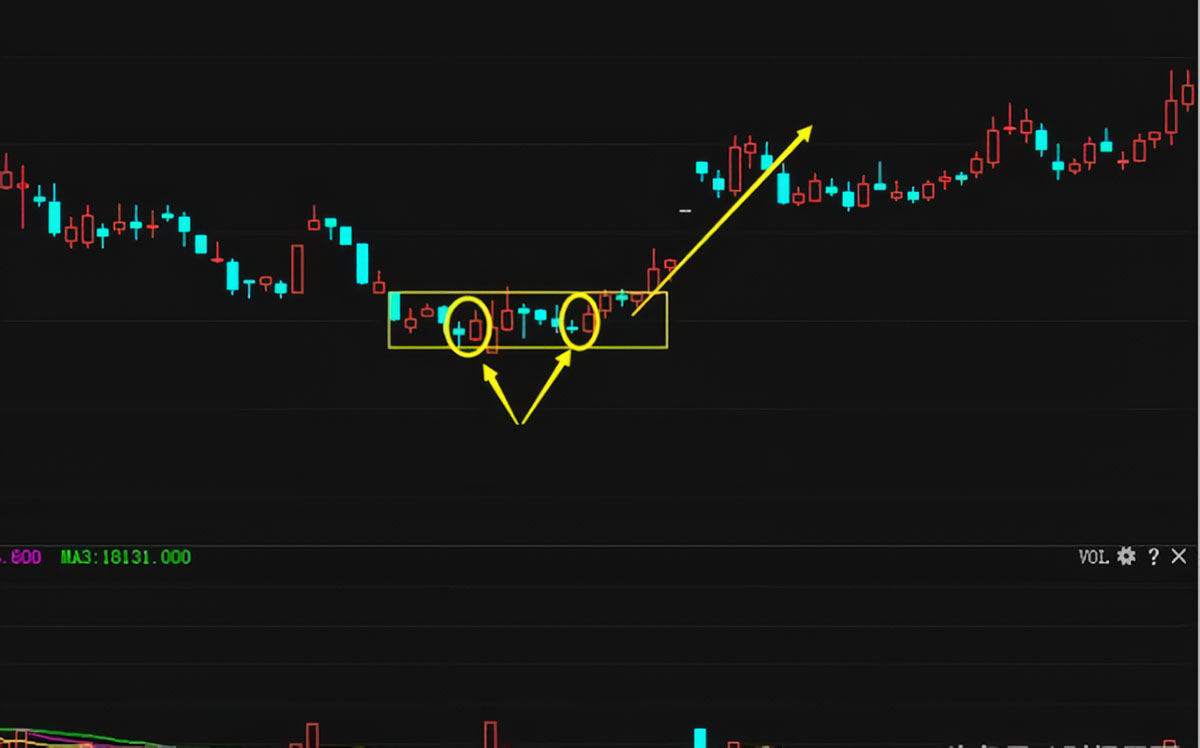
The engulfing pattern is an important reversal pattern consisting of two
candlestick real bodies of opposite colors.
Regarding the engulfing form, there are three criteria:
First, before an engulfing pattern occurs, the market must be in a clearly
identifiable up-or-down trend, even if the trend is only short-term.
Secondly, the engulfing pattern consists of two candle lines. The real body
of the second candle line must completely cover the real body of the first
candle line. If it is a bullish trend, the first candle is a bear line, and the
second candle is a bull line. Vice versa. Likewise.
Third, the color of the second entity of the engulfing form must be opposite
to the color of the first entity.
If engulfing patterns possess these characteristics, the likelihood that they
constitute an important reversal signal is greatly enhanced.
In an engulfing pattern, the real body on day one is very small, and the real
body on day two is very large. Engulfing patterns often appear after very
long-term or sharp market movements. If there is a very long-term uptrend, it
may mean that potential buyers have entered the market to take long positions,
resulting in a lack of sufficient new long supply in the market to continue to
push the market upward. And after a sharp market move, the market may have gone
too far and become susceptible to profit-taking positions.
In an engulfing pattern, the second real body is accompanied by excess
volume. Additionally, in an engulfing pattern, the next day's entity engulfs
more than one entity.
-
Dark Clouds Cover
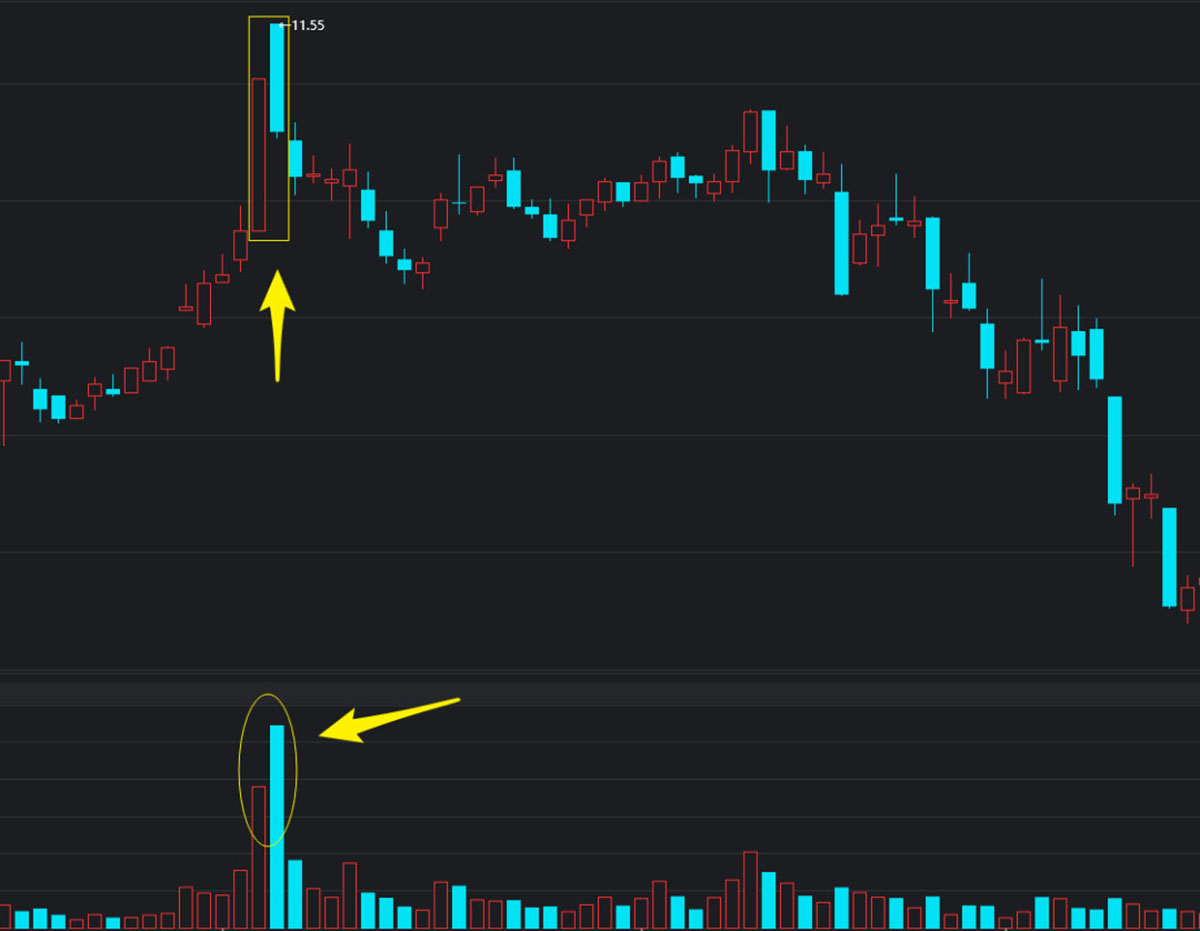
The dark cloud cover pattern, also known as the dark cloud line pattern, is
one of the more common top transition patterns on the K-line chart. It usually
occurs during an upward trend in stocks or markets and is a potential turning
signal.
A dark cloud cover pattern indicates a possible reversal in the market's
uptrend. The Yang line on the first day represents a strong buyer's market, but
the Yin line on the second day indicates that sellers have entered the market,
pulling the price back, and the closing price of the Yin line is lower than half
of the previous day's Yang line, implying the strengthening of the seller's
power. This pattern suggests a potential bearish counterattack, and investors
should be aware that the market may enter a downtrend.
Traders usually adopt cautious strategies after confirmation of dark cloud
cover, such as waiting for further confirmation signals or adopting defensive
trading strategies to avoid potential downside risks.
Feature:
The first day is a Yang line. The specific pattern is based on a rising Yang
line, which represents an upward trend.
The second day is the Yin line. The opening price of the Yin line on the
second day is higher than the closing price of the previous day, but the final
closing price is lower than half of the previous day's Yang line, forming a
covered Yin line.
The above are not all K-line candle chart patterns. In fact, there are many
other complex candle chart patterns. Candlestick charts are a powerful technical
analysis tool that play a key role in interpreting market trends. By
understanding and skillfully using various important candle chart types,
investors can more accurately judge market behavior and improve the accuracy of
their trading decisions.
When using candlestick charts to make trading decisions, investors also need
to pay attention to some key techniques, such as using K-line patterns in
combination with support and resistance levels, for better results. For example,
if three or more K-line combinations appear at the same position, it is likely
to be a support or resistance level. If a K-line combination appears at the
support or resistance level, the signal is more reliable. It can also be
combined with other technical analysis tools, such as moving averages and
relative strength indicators, to comprehensively judge market trends. In
addition, pay attention to market news and events in a timely manner to avoid
blindly following the trend. Finally, set clear stop-loss and profit points,
reasonably control risks, and analyze the market rationally to ensure the
robustness and sustainability of investment decisions.
Disclaimer: This material is for general information purposes only and is not intended as (and should not be considered to be) financial, investment or other advice on which reliance should be placed. No opinion given in the material constitutes a recommendation by EBC or the author that any particular investment, security, transaction or investment strategy is suitable for any specific person.

















